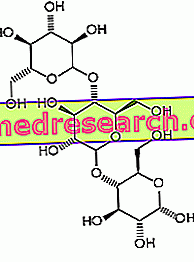By professor Rosario Bellia
Tendonitis is always around the corner it is better to prevent it.
Kinesiology ® taping is used in sports: before, during and after the athletic gesture. First to prepare, to prevent and then to relax. Furthermore, it helps the body to recover from inflammatory processes and muscle tone imbalances, which give rise to "retractions", using specific techniques.

Furthermore, kinesiological taping ® aims to operate endogenous analgesic systems; stimulate the spinal inhibitor system and the descending inhibitor system; to correct joint problems, reduce inaccurate alignments caused by spasms and shortened muscles; normalize muscle tone and joint band abnormality; improve the ROM. It is used as a complement: in osteopathy, in chiropractic, in manual therapies and in physical therapies.
Kinesiological taping method - The technique of applying elastic tape, which tackles the "imbalances" of the body in a global way, tries to restore the correct functional balance, in a global and three-dimensional view of the body - balance -.

The tendons represent the strongest component of the muscle-tendon unit and their main purpose is to transmit the forces generated by the muscle to the bone levers.
With regard to the Achilles tendon it should be remembered that it is the largest and strongest tendon of the human body. It is estimated that it can withstand loads up to 300 kg; in other words, this means that the Achilles tendon during the run is loaded with a value at least 6 - 8 times the body weight. Furthermore, it should not be forgotten that the triceps sural has a force vector which, in addition to causing plantar flexion, also induces supination of the foot due to its central-medial insertion on the calcaneus and the rotation of its fibers.
The triceps surale is considered to be the greatest supinator and stabilizer of the hindfoot, moreover during the walk it is activated above all in the central part of the support phase to control the advancement of the tibia on the tarsus (8). The gastrocnemius-soleus complex represents four fifths of the volume of the leg and this consistency translates, in functional terms, into an ability to absorb shocks both at tendon and muscle level. The muscle-tendon unit passes through three joints (knee, ankle, subtalar joint) thus predisposing itself to a high incidence of lesions.
From a postural point of view, the axis of the Achilles tendon creates with the vertical an angle ranging from 1 ° to 5 ° of inversion (9). Clinical observation of this angle is often carried out to have an indication of the position of the tibio-tarsal and subtalar joint.
Kinesiology ® taping is used in sports more and more widely before, during and after the athletic gesture, to prepare, prevent and relax the athlete.
Kinesiological taping ® should be seen as an additional therapy, which helps in the rehabilitation process and not as an elective therapy, regardless of the fact that the diagnosis must be corrected .
From the book: R. Bellia - F. Selva Sarzo - "Kinesiological taping in sports traumatology - practical application manual" ed. Alea Milan - 2011.
The initial observation phase of the patient is very important for the success of the bandage with the method of kinesiological taping ®, always respecting the principle of globality.
This method is based on the application of an elastic tape that stimulates the natural healing process, assisting the body in activating the physiological processes of traumatized tissues, and brings it back to health.
All organisms have an innate (genetically determined) capacity for self-regulation that allows for the achievement of a homeostatic balance and a possibility of self-healing. In response to external aggression, the body begins a process of "repair-remodeling" through the inflammatory response.

The tendon of the triceps sural, capable of withstanding tensile forces of 300 kg as already exposed, is the most powerful tendon of the organism, but it is poorly vascularized in the intermediate part and this makes it vulnerable.

In sports it manifests itself at the end of its career due to some triggering factors: weight gain, poor hydration (as shown by a Japanese study), antibiotic treatment (iatrogenic cause), inadequate footwear, therefore imbalance in the load on the podium, intensification of training after a period of forced rest, tendon stiffening after cortisone infiltrative treatment, etc.
The Achilles tendon, also called the heel tendon, originates from the fusion of the aponeurosis of the gastrocnemius and soleus muscles. It is an anatomical ribbon-like structure, made up of collagen fibrils, interposed between the triceps sural and the calcaneus, responsible for the transmission of mechanical impulses deriving from the muscular contraction of the calf to the skeletal segment, creating an articular movement of fundamental importance: the push of the foot . In addition to this fundamental task, it acts as a buffer against voluntary and / or involuntary maximal muscle contraction.



